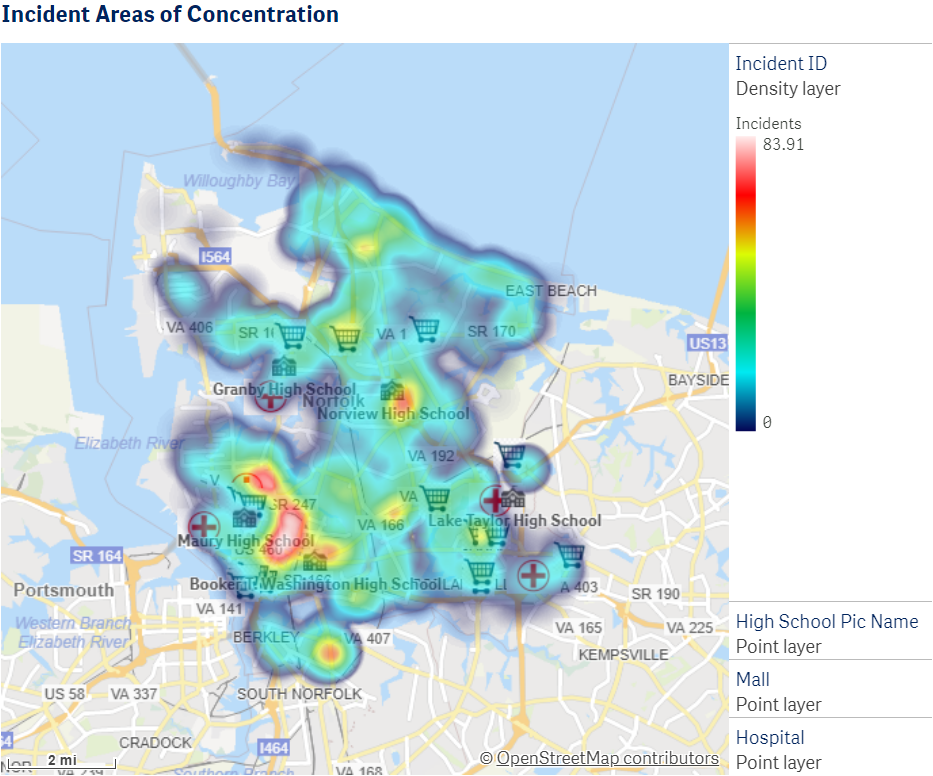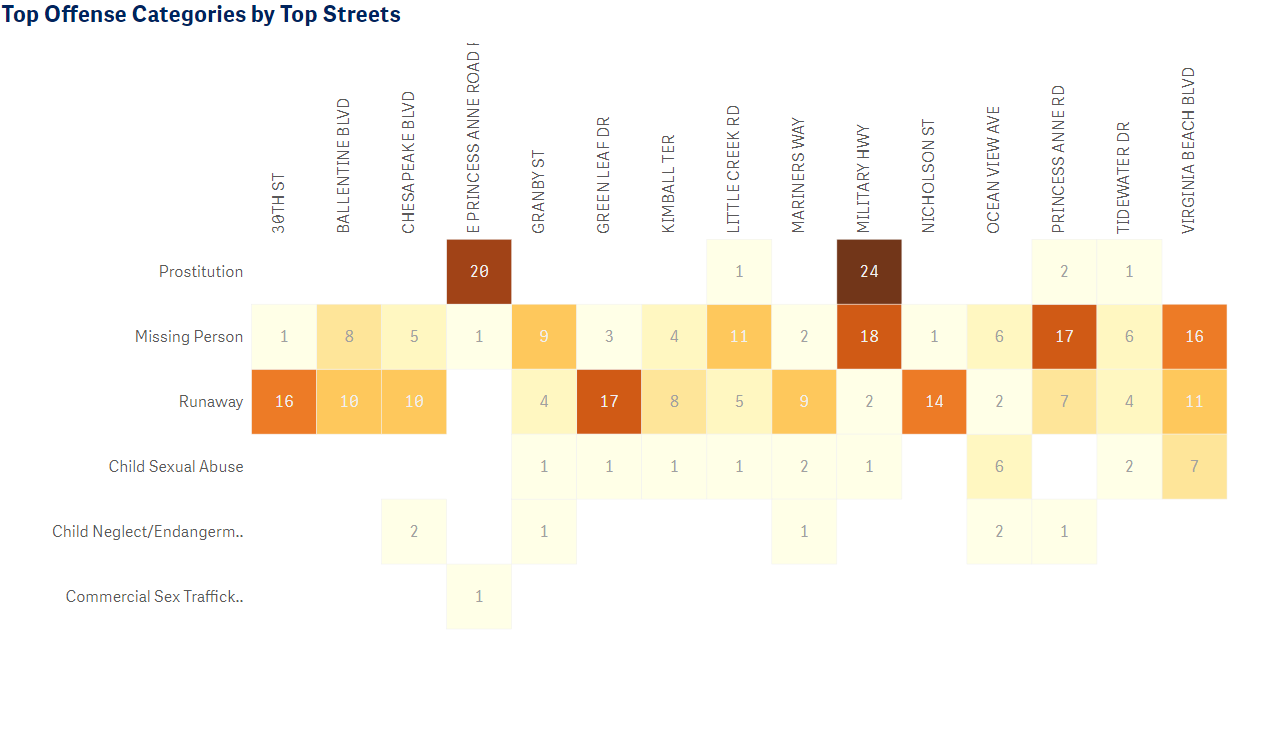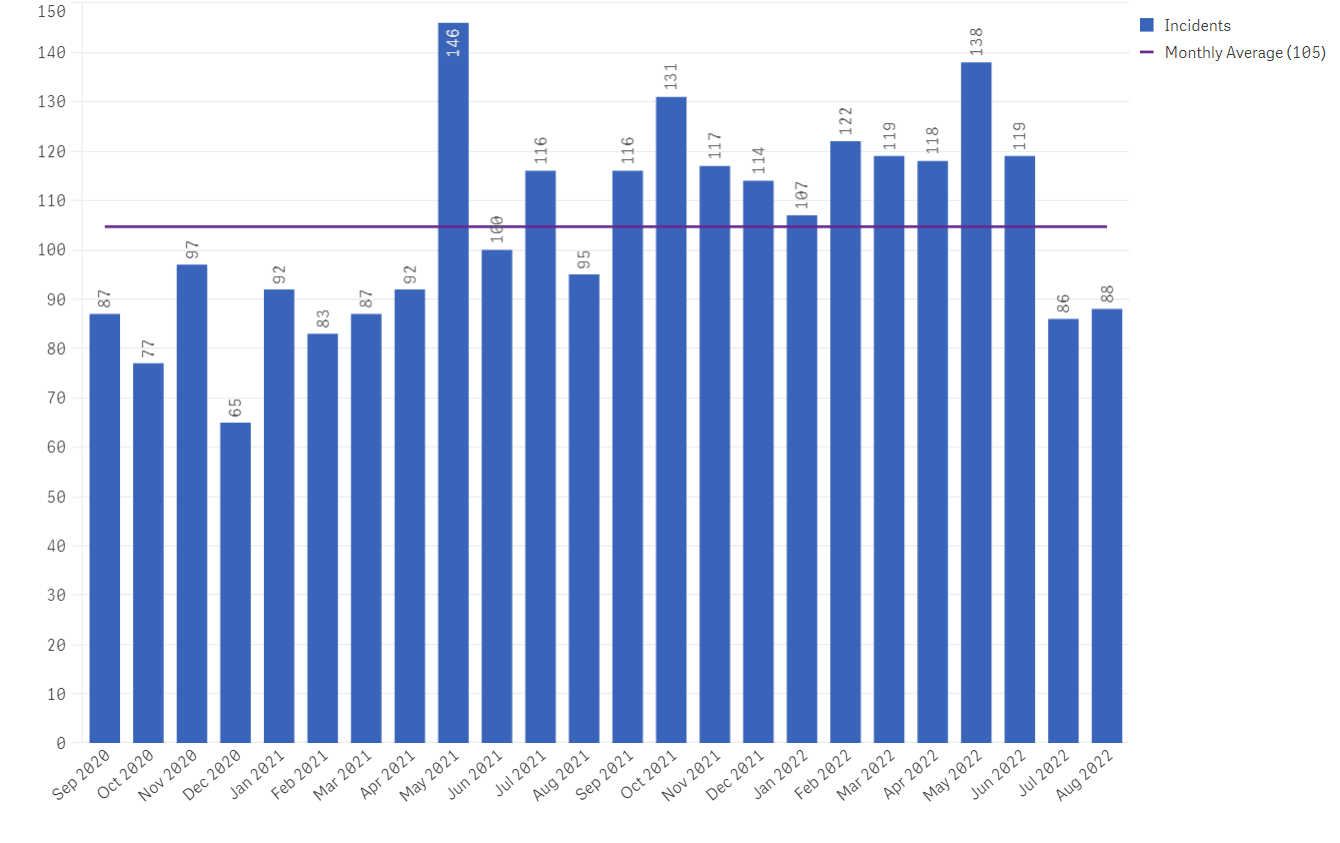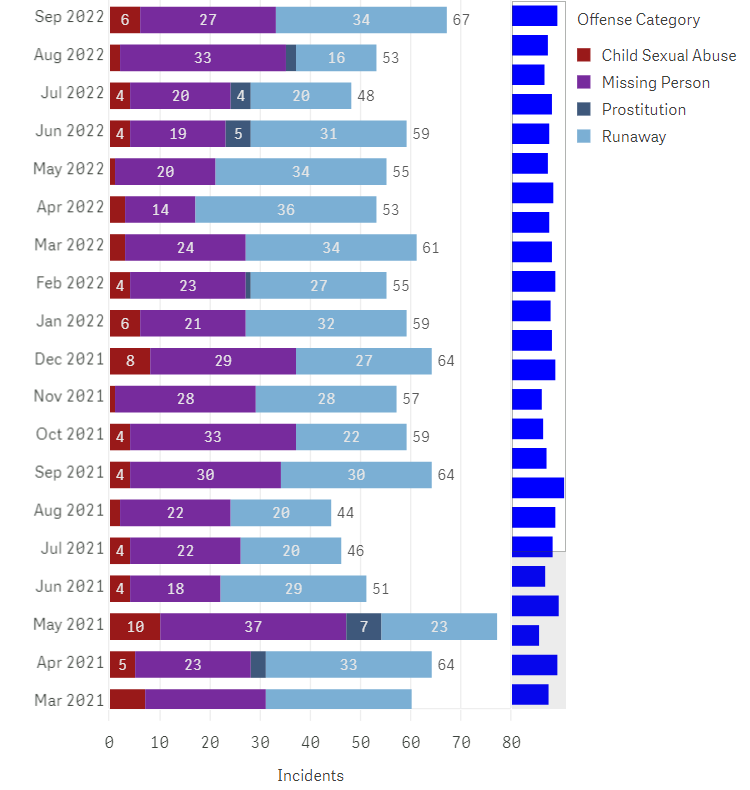The Importance of Local Incident Data in the Fight Against Human Trafficking
The Importance of Local Incident Data in the Fight Against Human Trafficking
When going through the difficulty of solving a complex problem, data is an important, though sometimes overlooked tool in the fight against a wide range of issues.
The ability to centralize and analyze various data sources related to a particular issue can help government agencies uncover hidden patterns and determine what areas need the most resources. This is particularly true for human trafficking— the recruitment, transport, harbor, or receipt of people for forced labor or sex. Human trafficking is an issue that has long been underreported, leaving governments with a lack of reliable, high-quality information. This is largely due to the absence of a federal mandate for the collection of trafficking data, as well as the reluctance of trafficking victims to self-report for fear of harm to themselves or loved ones.
The more data state and local agencies can bring together, the better-equipped they will be in the fight against human trafficking. The Commonwealth of Virginia, for one, continues to add new data sources to its human trafficking data-sharing platform, with promising results.
Fewer silos = greater insights
Misclassification of victims as sex workers and a lack of self-reporting are two major hurdles to the collection of reliable data related to trafficking. But data silos are another.
In 2018, the Virginia Department of Criminal Justice Services (DCJS) and Voyatek worked together to create a data-sharing platform that would help the state break down silos to better understand and respond to: the opioid crisis and the COVID-19 pandemic.
This year, DCJS and Voyatek repurposed the data-governance model to address human trafficking. Through the Virginia Analytics System for Trafficking (VAST), organizations across the Commonwealth can better understand trends in offenses, contextualize risk factors, and target services to victims. For example:
- By combining criminal record data, demographic data, and data from Missing Children’s reports, stakeholders can identify potential hot spots for human trafficking.
- Stakeholders can generate profiles of those most vulnerable or look for localities with low population density but relatively high incidences of missing children.
- Stakeholders can quickly access data on incidents, victims, offenders, and arrests, including color-coded maps of such details by county across the state.
Now, Virginia has added even more data to the platform. By integrating local incident data, the solution allows for even more granular analysis of trafficking trends in the Commonwealth.
Incorporating local incident data
With the incorporation of local incident data, state and local officials have more detailed insights into who is falling victim to trafficking, who is perpetrating the crime, where it is taking place, and more. For example, Norfolk is a locality at or near to top of reported daily incidents of missing children, making incident data from that area one of the most important local data sources that have been on-boarded.
The figure below, created using the newly integrated data, shows areas where documented police incidents take place in Norfolk. Incidents may include human trafficking or offenses that put children at risk for human trafficking such as prostitution or runaway activity (a large contributor of missing children data). As you can see, a high concentration area is toward the southwest section. Of note is that this very near to high schools and malls.

Figure 1: Incidents Related to Human Trafficking or Human Trafficking Risk Factors in Norfolk from 2020 to August 2022
Local incident data can offer an even more granular view, though, concentrating the geolocated data sourced from block addresses. As seen in the chart below, Military Highway in Norfolk, has the highest incident count for prostitution and missing persons, making it a potential hot spot for human trafficking.

Figure 2: Top Offense Categories by Top Streets in Norfolk from 2020 to August 2022
Through VAST and the incorporation of local incident data, the Commonwealth can also identify trends over time. In the Eastern shore, May 2021 and 2022 had the highest incident count(s) for the following offense categories: Abduction, Kidnapping, Child Neglect, Missing Persons, and Sex Crimes. In Norfolk specifically, May of 2021 had the highest incident count across the offense categories of Child Sex Abuse, Missing Person, Prostitution and Runaway. These trends appear in the two tables below.

Figure 3: Eastern shore Top Human Trafficking and Offenses involving Human Trafficking Risk Factors by Month, July 2020 to August 2022

Figure 4: City of Norfolk Aggregate Human Trafficking and Offenses involving Human Trafficking Risk Factors by Month, July 2020 to September 2022
The data helps state and local agencies understand when and where people are at the greatest risk for human trafficking. These are just a few examples, too. With local data, stakeholders may also be able to identify events that lead to trafficking spikes and ensure survivors are receiving the services and resources they need.
The complex issues that allow human trafficking to persist must be addressed on multiple fronts. But cross-agency data sharing is one practical strategy state and local governments can apply to mitigate this human rights crisis. Through data capture, data analysis, and data-driven action, governments like the Commonwealth of Virginia are better able to reduce and ultimately eradicate human trafficking.
-Sam Zohab, Project Analyst, Voyatek

